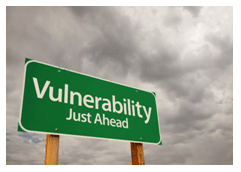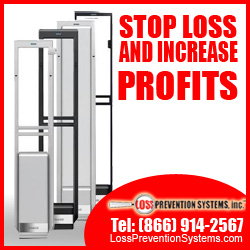
How does Notre Dame’s football team manage to maintain a top program year in and year out? Is it the Luck of the Irish that does it? No, they field a competitive team by working hard and preparing for the upcoming season. As we enter March we think of spring and St. Patrick’s Day and the Luck of the Irish and lucky four-leaf clovers and all of these things. In retail, we also think about store inventory time and how the results will come out this year.
If you are counting on the Luck of the Irish or just plain luck to get you through inventory and wind up with successful results you need to get a better plan. Obtaining inventory results that reflect a healthy, robust business starts well before the inventory date. While it may include the preparation time several weeks in advance of the actual day/night of inventory counting the real work begins when you start your shortage action plan.
If this is the first inventory for your store you will not have a measurement or prior inventory as a baseline for what you will be up against. I would suggest that in your case you measure your store against the national shortage average OR you measure it against the national shortage average for your type of retail business. According to the National Retail Federation 2018 National Retail Security Survey, shoplifting accounted for 35.7% of losses while employee theft accounted for 33.2%. Loss Prevention Systems, Inc. personnel are well-versed in shortage and can be a helpful consultant to you in this area. For those who have inventoried previously you want to lower whatever the prior year shortage results were for your store. Obviously it would be fantastic if zero shortage could be counted on year in and year out but the fact of the matter is very few stores will come in at zero (I have seen overages but those always offset the next year due to poor counts or paperwork errors).
So where does one start in their planning? First you have to look at your anti-theft strategies. With nearly 70% of the shortage attributable to theft you can take care of a big chunk of shortage by addressing this issue. Is your store using electronic article surveillance equipment to deter and prevent shoplifting and even employee theft? If you do not have an electronic article surveillance system in your first assignment is to get one. This includes the towers, tags, and even integrated cameras. Don’t use second-hand equipment or an off-brand system in your store. Using a name brand solution from Sensormatic is the best option and it is more affordable than you may think. Again, Loss Prevention Systems, Inc. can guide you into the best solution for your business no matter how big or small it may be.
You then need to take a look at the other areas that impact shortage, operations, vendor shortage and a small portion which is undefined. Looking at each of these aspects can be time-consuming because there is so much that can impact each one. If you have managers working for you they should be looking at how shortage could be happening in their departments and present solutions to address them. That information then goes into a master shortage plan. If you are lucky you will have a team that knows where to look for shortage opportunities. If you don’t have that kind of luck or if you are the only manager for your store you are still lucky. Loss Prevention Systems, Inc. can work with you to conduct a risk assessment and identify vulnerabilities and devise plans.
Finally, once your anti-theft system is up and running and your shortage action plans have been created you can spend the month prior to inventory prepping the store. There’s no magic to it, it is a detailed preparation to make sure every piece of merchandise is properly tagged and ready to be counted. Inspections of nooks, crannies, shelves, underneath base decks, on top of fixtures and in supply closets to locate items that have migrated where they should not have can add dollars back to your inventory.
Four leaf clovers, lucky charms, wishful thinking nor luck of the Irish are going to get you a successful inventory. Theft prevention, careful planning and advice from people who have been in the Loss Prevention field WILL result in successful inventories. Follow this advice and find your own pot of gold at the end of the inventory rainbow.
 It is January and you are ready to get started on your new year. What does the start of a New Year look like for your business? Are you still trying to move out seasonal and clearance merchandise? Are you preparing to trim back payroll by releasing seasonal employees? Maybe you are already thinking about inventory and what you will need to do to prepare for that day. There are all sorts of ways retail owners and managers start the New Year but I would suggest that before you look forward you take time to look back on the previous year.
It is January and you are ready to get started on your new year. What does the start of a New Year look like for your business? Are you still trying to move out seasonal and clearance merchandise? Are you preparing to trim back payroll by releasing seasonal employees? Maybe you are already thinking about inventory and what you will need to do to prepare for that day. There are all sorts of ways retail owners and managers start the New Year but I would suggest that before you look forward you take time to look back on the previous year. Have you ever noticed how we all anticipate a New Year will bring new and exciting things into our lives (or businesses) but after the first month we often realize that nothing is new or improved or better? In fact, we may be disappointed as the year progresses that problems we hoped would be resolved (read, “magically disappear”) are still there. We make resolutions at the beginning of the year that are meant to help “improve” or “fix” something we know is an opportunity but then we slide back into our routines and those “problems” don’t get any better.
Have you ever noticed how we all anticipate a New Year will bring new and exciting things into our lives (or businesses) but after the first month we often realize that nothing is new or improved or better? In fact, we may be disappointed as the year progresses that problems we hoped would be resolved (read, “magically disappear”) are still there. We make resolutions at the beginning of the year that are meant to help “improve” or “fix” something we know is an opportunity but then we slide back into our routines and those “problems” don’t get any better. It’s 2019 and time to make some New Year’s resolutions! We all know how easy a resolution can be to make but they are hard to keep. We also know that it is just as easy to break a resolution but are there resolutions a store owner can make that would benefit the store AND benefit society? I think one resolution that would be mutually beneficial for both would be the implementation of environment-friendly policies and procedures. We are talking about sensible measures that would appeal to anyone on either side of the political spectrum. Right now there is a big push for the elimination of plastic shopping bags. There are also those opposed to going back to paper bags. What could the solution be? Try encouraging the use of recyclable, reusable shopping bags for your customers. You make those opposed to one-time use bags happy and you save money on the need to regularly purchase more shopping bags (which can be a rather pricey supply on your monthly expense report). To implement this type of change you would want to have reusable bags ready for your customers and you might even give them away for the first few weeks you start the program. After that, you might give customers a small discount to customers who bring their own bags, say 1% on every transaction.
It’s 2019 and time to make some New Year’s resolutions! We all know how easy a resolution can be to make but they are hard to keep. We also know that it is just as easy to break a resolution but are there resolutions a store owner can make that would benefit the store AND benefit society? I think one resolution that would be mutually beneficial for both would be the implementation of environment-friendly policies and procedures. We are talking about sensible measures that would appeal to anyone on either side of the political spectrum. Right now there is a big push for the elimination of plastic shopping bags. There are also those opposed to going back to paper bags. What could the solution be? Try encouraging the use of recyclable, reusable shopping bags for your customers. You make those opposed to one-time use bags happy and you save money on the need to regularly purchase more shopping bags (which can be a rather pricey supply on your monthly expense report). To implement this type of change you would want to have reusable bags ready for your customers and you might even give them away for the first few weeks you start the program. After that, you might give customers a small discount to customers who bring their own bags, say 1% on every transaction. NO! not yet. Before we begin patting ourselves on the back you must remember that your Sensormatic System is only part of your shoplifting solution. Your Sensormatic System will protect your merchandise however, many shoplifters are determined and will try to steal anyway. The Sensormatic System itself is a deterrent. Its mere presence will dissuade many shoplifters.
NO! not yet. Before we begin patting ourselves on the back you must remember that your Sensormatic System is only part of your shoplifting solution. Your Sensormatic System will protect your merchandise however, many shoplifters are determined and will try to steal anyway. The Sensormatic System itself is a deterrent. Its mere presence will dissuade many shoplifters.
 For a small business owner, bringing sales to their business is not an easy feat.
For a small business owner, bringing sales to their business is not an easy feat. You think that you may be scoring a great deal on cheap, knock-off Electronic Article Surveillance (EAS) hard tags and labels, however, over time you find that you are missing shoplifters due to poor pick rates or hard tags that are easy to defeat. Why? To make real, quality EAS hard tags and labels it takes more effort and time. The materials and sophistication of the circuit is not something that can be easily done by a slave laborer in some dark factory in a third world nation. The labels we sell are all high-quality EAS labels and tags that are both Sensormatic and Checkpoint Systems compatible.
You think that you may be scoring a great deal on cheap, knock-off Electronic Article Surveillance (EAS) hard tags and labels, however, over time you find that you are missing shoplifters due to poor pick rates or hard tags that are easy to defeat. Why? To make real, quality EAS hard tags and labels it takes more effort and time. The materials and sophistication of the circuit is not something that can be easily done by a slave laborer in some dark factory in a third world nation. The labels we sell are all high-quality EAS labels and tags that are both Sensormatic and Checkpoint Systems compatible. In every career, there are people, places, and things that help to shape who you become in that career. A Retail Loss Prevention career is no different. My career in Loss Prevention goes back nearly 27 years. A long time ago in a department store not far away I was hired as a Loss Prevention Associate with only my military experience and a college degree in hand. I had absolutely no Loss Prevention background. There have been lessons learned along the way that shaped the way I approached Loss Prevention and the way I developed my style of working with people and managing others.
In every career, there are people, places, and things that help to shape who you become in that career. A Retail Loss Prevention career is no different. My career in Loss Prevention goes back nearly 27 years. A long time ago in a department store not far away I was hired as a Loss Prevention Associate with only my military experience and a college degree in hand. I had absolutely no Loss Prevention background. There have been lessons learned along the way that shaped the way I approached Loss Prevention and the way I developed my style of working with people and managing others. Loss Prevention Managers and Associates use audits on a regular basis to keep track of merchandise that may be potentially high theft items. The items may be high dollar such as iPods, laptops, computer tablets and so on. The products being audited may simply be easy to steal and resell. Such items can include a variety of products ranging from drill bits to medicines, razor blades and even fragrances. Audits are an effective tool for Loss Prevention departments to quickly identify theft trends and to begin investigating when and how losses are taking place. For stores that cannot afford a Loss Prevention department, it falls upon store owners and managers to investigate missing merchandise. The question then becomes, how does a management team decide what items should be audited or when audits should take place?
Loss Prevention Managers and Associates use audits on a regular basis to keep track of merchandise that may be potentially high theft items. The items may be high dollar such as iPods, laptops, computer tablets and so on. The products being audited may simply be easy to steal and resell. Such items can include a variety of products ranging from drill bits to medicines, razor blades and even fragrances. Audits are an effective tool for Loss Prevention departments to quickly identify theft trends and to begin investigating when and how losses are taking place. For stores that cannot afford a Loss Prevention department, it falls upon store owners and managers to investigate missing merchandise. The question then becomes, how does a management team decide what items should be audited or when audits should take place?  The IT world has a phrase “garbage in, garbage out”. The same concept applies to hiring new employees. If you do not put effort into selecting a new employee, then chances are you will be disappointed down the road.
The IT world has a phrase “garbage in, garbage out”. The same concept applies to hiring new employees. If you do not put effort into selecting a new employee, then chances are you will be disappointed down the road.